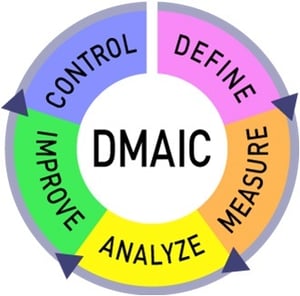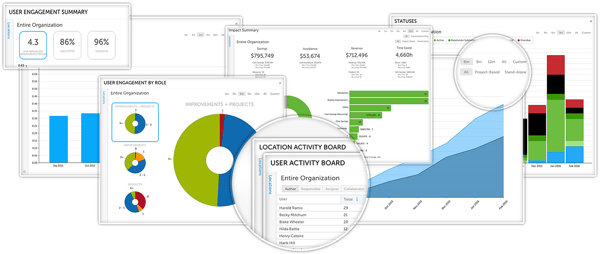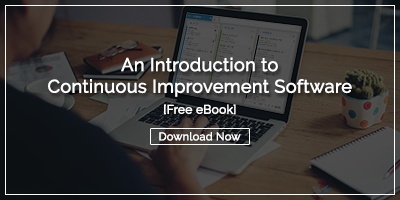 The DMAIC improvement cycle is one of the most widely used Six Sigma management techniques. It was developed by Motorola in the 1980’s, and it helped the company win the Malcolm Baldridge National Quality Award in 1988.
The DMAIC improvement cycle is one of the most widely used Six Sigma management techniques. It was developed by Motorola in the 1980’s, and it helped the company win the Malcolm Baldridge National Quality Award in 1988.
The approach caught on, and thousands of people learned how to attack problems by improving the processes that were causing the problems in the first place.
These days, companies across all industries use the technique to make sure they deliver high-quality customer value with the least amount of friction and waste.
Organizations that are serious about getting the most out of their improvement efforts and using DMAIC to the fullest implement software that supports the improvement cycle. This accelerates improvement processes, makes improvements more likely to succeed, and sets the foundation for measuring the impact of DMAIC.
Here’s how it helps at every phase of the cycle.
Define
The DMAIC cycle begins with a detailed description of the business problem to be addressed. Great care is taken to document the business impact and significance of the problem. All of the stakeholders, including internal and external customers are identified along with the process or business units involved. This results in a charter that sets the scope of the project and determines all of the required resources.
Email and spreadsheets are not great tools for documentation of this detail. Improvement software, on the other hand, creates a repository for all of the related documents, assignments, and conversations. Everyone involved has one place to find information and one version of the truth. It also serves as a repository of knowledge, so the team can begin the cycle by looking for similar problems that have been addressed in the past and learn from what’s been done before.
Measure
DMAIC is all about producing quantifiable results, so measurement is an essential ingredient. The first step is to establish the baseline and define what can be measured about the process today. Teams look for key performance indicators (KPIs) that can be measured against the current and redefined process. An agreement is reached about who will conduct future measurements, how often the data will be collected, and how it will be reported to the stakeholders.
Improvement management software addresses both the current state measurements and impact reporting into the future. Companies without a software solution in place often lose track of how targeted processes perform over the long-term and may over- or underestimate the impact of the DMAIC cycle.

Analyze
At this point, the scope of the problem and the desired outcome of the cycle are understood, so it is time to pinpoint the root causes of the problems and identify possible solutions. Visual management methods like control charts and value stream mapping can be beneficial, as can techniques such as the 5 Whys. Opportunities for improvement are identified and documented, and a plan for action takes shape.
This is another juncture where the information stored in the improvement management solution can be a big help. Users can find best practices and discuss how similar challenges were overcome. The solution also collects all of the identified opportunities for improvement, even those that aren’t going to be implemented during this DMAIC cycle. The team can go back to them if further improvement is needed.
Improve
Once the analysis is complete, the improvement plan is put into action, and new Standard Work is introduced. In some cases, it will be necessary to test or experiment with improvement ideas before a final solution is accepted.
Your software platform will play a significant role in the improvement phase. It allows leaders to make assignments and track activities throughout the process. The best solutions have automated alerts and notifications, so that team members and leaders stay on top of the project. It simplifies cross-functional collaboration for processes that involve more than one team or department. The technology allows executive leaders to track all of the improvement projects across the entire organization with customizable dashboards and charts.
Control
Once the process changes are implemented, it is necessary to monitor them and document the results over time. The measurement intervals that were decided in the early phases of the cycle are now executed, and the process is monitored for additional opportunities for improvement and potential unexpected consequences of the change.
Improvement software is used to chart the process KPIs over time and alert the team to any out-of-range values. It can also be used to broadcast the impact of improvement and help prepare the team for the next DMAIC cycle.
Improvement software isn’t a requirement for DMAIC, but it goes a long way toward ensuring positive and lasting results.



Add a Comment